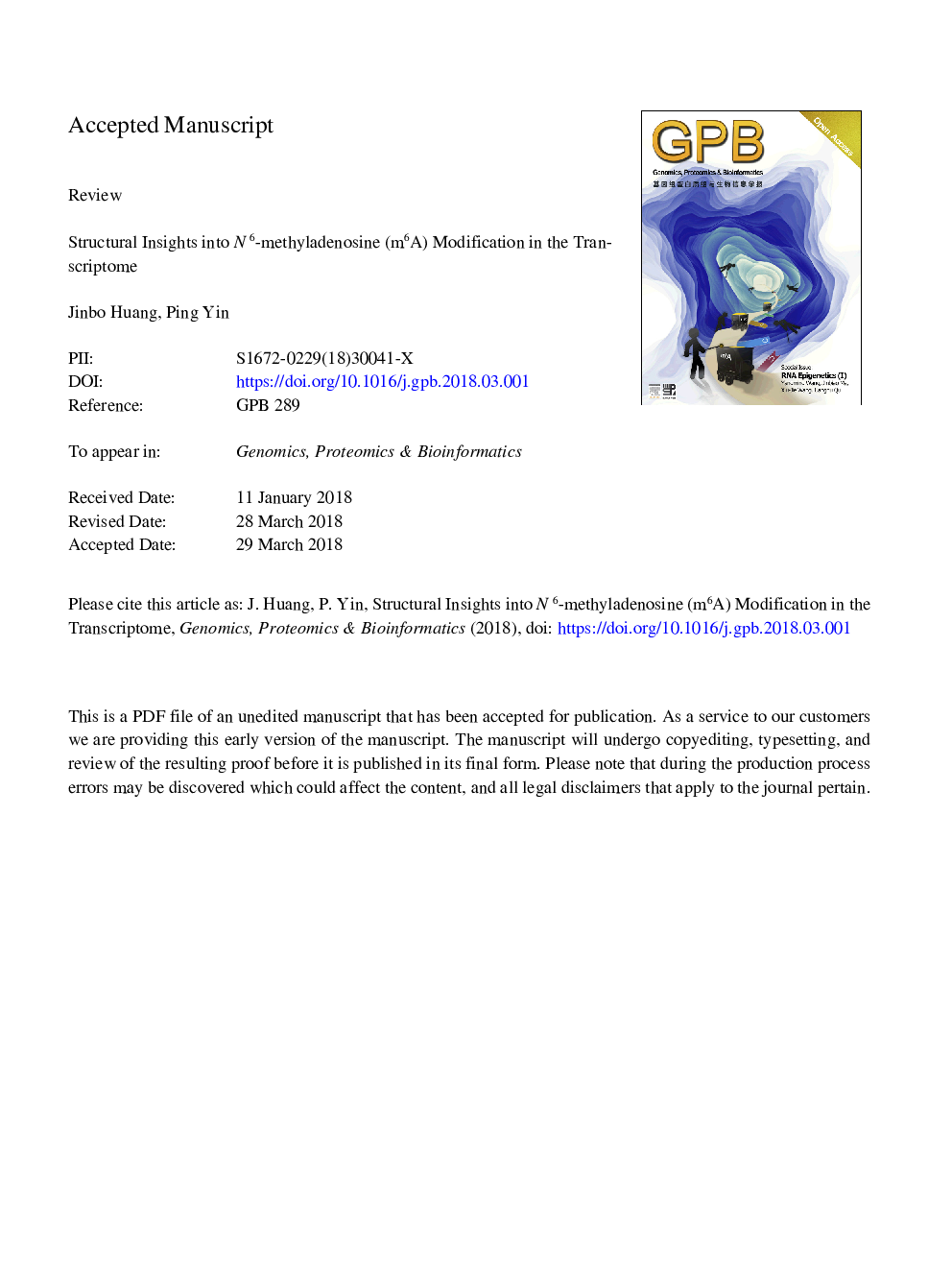| Article ID | Journal | Published Year | Pages | File Type |
|---|---|---|---|---|
| 8646426 | Genomics, Proteomics & Bioinformatics | 2018 | 38 Pages |
Abstract
More than 100 types of chemical modifications in RNA have been well documented. Recently, several modifications, such as N6-methyladenosine (m6A), have been detected in mRNA, opening the window into the realm of epitranscriptomics. The m6A modification is the most abundant modification in mRNA and non-coding RNA (ncRNA). At the molecular level, m6A affects almost all aspects of mRNA metabolism, including splicing, translation, and stability, as well as microRNA (miRNA) maturation, playing essential roles in a range of cellular processes. The m6A modification is regulated by three classes of proteins generally referred to as the “writer” (adenosine methyltransferase), “eraser” (m6A demethylating enzyme), and “reader” (m6A-binding protein). The m6A modification is reversibly installed and removed by writers and erasers, respectively. Readers, which are members of the YT521-B homology (YTH) family proteins, selectively bind to RNA and affect its fate in an m6A-dependent manner. In this review, we summarize the structures of the functional proteins that modulate the m6A modification, and provide our insights into the m6A-mediated gene regulation.
Related Topics
Life Sciences
Biochemistry, Genetics and Molecular Biology
Genetics
Authors
Jinbo Huang, Ping Yin,
